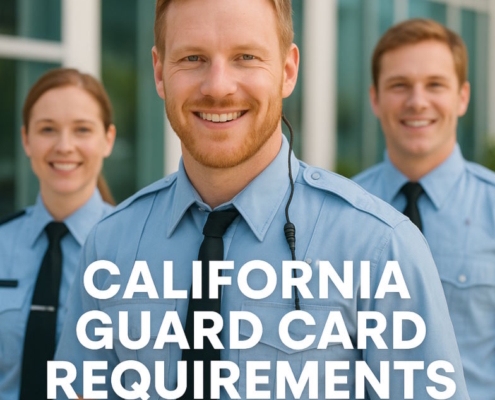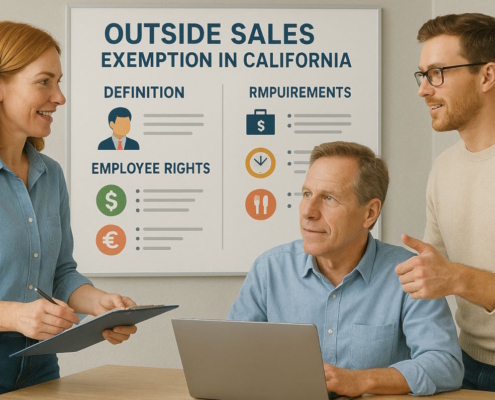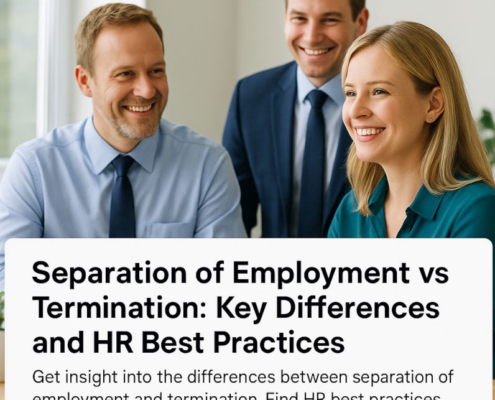Introduction
Depending on whether the route is intrastate or interstate and the goods they are transporting, commercial drivers in California are subject to different service hour regulations. You must abide by federal hours of service regulations if you are transporting hazardous trash or participating in interstate trade. If not, you must abide by the regulations set forth by the Department of Transportation (California).
Intrastate versus interstate trade
The Code of Federal Rules states that:
In the context of the United States, interstate commerce refers to trade, traffic, or transportation that occurs: (1) between a location within a State and a location outside of that State (including a location outside of the US); (2) between two locations within a State via another State or a location outside of the nation’s borders; or (3) between two locations within a State as a component of trade, traffic, or transportation that originates or terminates outside of the State or the US.
This rule states that you qualify as an interstate driver when:
- You can depart California at any time while traveling, or
- You are involved in foreign trade.
Every other business is intrastate.
If you happen to be an interstate driver, you would adhere to the hours of service (federal) regulations.
Hazardous materials and waste
If you are transporting hazardous trash or hazardous materials, you must adhere to federal HOS regulations even if you work as an intrastate driver.
Any substance specified in 40 CFR chapter 1 of the United States Environmental Protection Agency’s regulations is considered hazardous waste.
Hazardous materials include:
- Those over the required quantity and those specified in Appendix A to 49 CFR 172.101,
- For materials that are radionuclide-containing mixes or solutions, those that comply with Appendix A’s paragraph 7 above, and
- For solutions or mixes devoid of radionuclides, concentrations greater than the prescribed limit.
Federal FMCSA service hours regulations
Federal hours of service regulations must be followed if you are:
- Involved in interstate trade, or
- Transporting hazardous substances or waste.
The Federal Motor Carrier Safety Administration (FMCSA) is responsible for enforcing these regulations. There are several guidelines for drivers who transport passengers and drivers who transport property.
Additionally, there are various exceptions for specific drivers and situations.
The FMCSA mandates that you utilize an authorized electronic logging device (ELD) to guarantee your compliance with these regulations. Logs on paper are prohibited. A list of certified ELDs who meet this ELD mandate is provided by the agency.
1. Truck drivers who transport property
The following federal hours of service regulations must be adhered to if you are a driver moving property instead of people:
- A driving shift every day that satisfies the following requirements:
- a) 10 hours off duty in succession before beginning a shift,
- b) No driving after the beginning of the shift for more than 14 hours, and
- c) Just 11 hours of driving in a 14-hour shift;
- After eight hours of nonstop driving, you have to take a thirty-minute rest.
- You may restart the sequence of days that are consecutive with a thirty-four-hour off-duty break; however, you are not allowed to drive over sixty hours in a span of seven days or over seventy hours in an eight-day period.
Reducing truck accidents is the aim of these restrictions. Many of them have been linked to driver weariness, according to the personal injury lawyers.
2. Drivers of vehicles that carry passengers
The government’s hours of service regulations that you must abide by are somewhat different if you are carrying people:
- A driving shift every day that satisfies the following requirements:
- a) 8 hours off duty in succession before beginning a shift,
- b) No driving after the beginning of the shift for more than fifteen hours, and
- c) Just 10 hours of driving in a workday of 15 hours;
- You cannot drive more than sixty hours in a seven-day period, or
- Over seventy hours in a period of eight days.
It is to be noted that after eight hours on the road, drivers who are carrying passengers are exempt from the 30-minute requirement for a rest period. They are unable to change their driving days, though.
These restrictions are intended to avoid bus accidents and driver tiredness.
3. Exemptions
There are exceptions to the FMCSA’s hours of service regulations for short hauls, using the sleeper bunk, and bad driving conditions.
Unfavorable conditions include snow, sleet, ice, fog, or any additional unfavorable weather or peculiar road conditions.
It may take you an additional two hours to get to your final location or a secure stop if:
- Before beginning your shift, you could not have reasonably been aware of these conditions, and
- They prevent you from finishing your journey before your service hours expire.
A sleeper berth allows drivers to control their off-duty time. Applicable in both cases of transporting passengers or property.
Drivers who transport property may divide their 10-hour off-duty time into two halves.
- At least seven hours in a row is one of them.
- Together, they total ten hours.
- Neither is less than two hours in a row, and
- Your everyday shift restrictions are not broken by the amount of time you spend driving before or following each period of rest.
Drivers who transport passengers can divide their eight-hour off-duty period into 2 parts.
- Neither is less than 2 hours.
- They both total eight or more hours, and
- Your everyday shift restrictions are not broken by the amount of time you spend driving prior to & following every rest period.
Maintaining a driver’s logbook using an ELD is not required for any short-haul drivers. A short-haul driver is someone who:
- Only travel 150 flight miles from your typical place of employment,
- Return to your regular workplace and are let off the job after 14 hours in a row, and
- Had eight hours off duty before a passenger-transporting shift or ten hours off duty before a property-transporting shift.
California DOT Hours of Service Rules
If you are not engaged in interstate commerce or transporting hazardous products, you must adhere to California DOT Hours of Service Rules. The rules governing hours of service in California differ for drivers of trucks, school buses, field labor vehicles, buses, adapted limousines, and farm produce.
However, no person with a commercial driver’s license (CDL) may work over eighty hours in a span of eight days. This eight-day driving window concludes with a minimum of 34 straight off-duty hours for drivers of buses, limousines, & trucks.
The California Highway Patrol (CHP) enforces these regulations. Officers have to make sure you are adhering to the driving limits & allowed time on the road. They may ask for a commercial motor vehicle (CMV) driver’s logbook of hours of service or digital proof of duty status. Penalties for breaking the hours of service regulations range from $100 to $1,000.
There are certain exceptions to these HOS rules.
1. Drivers of buses and limos
Drivers of customized limousines and intrastate buses are prohibited from operating vehicles in California.
- More than ten hours after eight hours off duty in a row, or
- After a minimum of eight continuous hours off duty and fifteen hours of on-duty time.
2. California DOT Hours of Service Rules: Drivers of trucks
Driving is prohibited for intrastate truckers:
- More than 12 hours following ten hours off duty in a row, or
- Following the conclusion of the sixteenth hour after reporting for duty, after ten hours of non-duty.
Your daily driving limit is ten cumulative hours following ten successive off-duty hours if you are operating a tank truck with more than 500 gallons of combustible liquid.
3. California DOT Hours of Service Rules: Farm laborers and school bus drivers
The California DOT Hours of Service Rules differ if you are operating a school bus, youth bus, school student activity bus, or farm labor vehicle.
You cannot operate a vehicle while driving one of these:
- Over ten hours on a workday, or
- Following the completion of the sixteenth hour after reporting for duty (after eight hours off).
4. Drivers of farm products
You are not permitted to drive when transporting agricultural products from the farm to the initial processing or packing location.
- Over sixteen hours on duty,
- In excess of twelve hours after eight hours of non-duty time, or
- After working 112 hours over the course of eight consecutive days.
There are some exceptions.
5. California DOT Hours of Service Rules: Exemptions
Certain drivers are exempt from California’s hours of service regulations. Our firm’s personal injury attorneys have discovered that the most frequent exemptions are for:
- Drivers who encounter unfavorable weather,
- Drivers who return to their regular job reporting site within 12 hours after operating within one hundred miles of it,
- Drivers of cars used for utility services,
- Firefighters,
- Law enforcement
- Drivers involved in the immediate restoration of fundamental public services and associated activities, and
- Operators of tow trucks.
Keep in mind that the federal short-haul exemption is much broader than California’s. The sleeping berth exemption in California is a little different.































